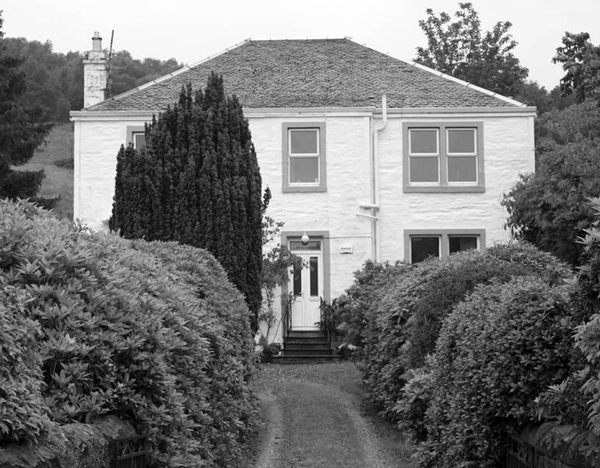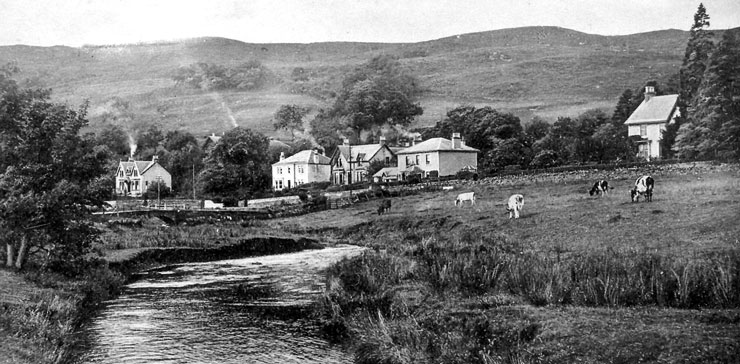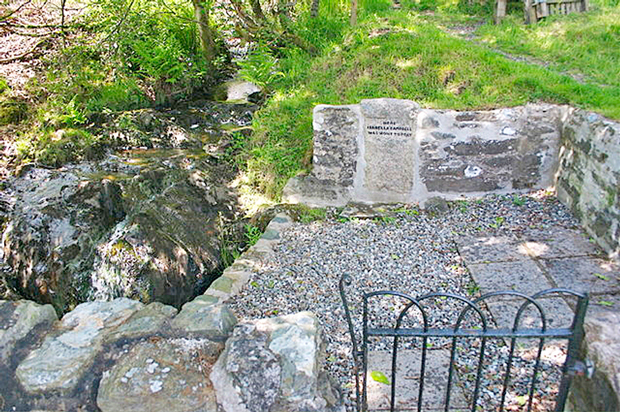ON THE HILLSIDE above Garelochhead there is a small sandstone monument near the B833.
Along a signposted track created by Ghurkas in 1992 and next to a picnic table, it is inscribed only: “Here Isabella Campbell was wont to pray.”
But who was Isabella? She and her sister Mary were the daughters of Donald Campbell, an ensign in the West Coast Indian Regiment, and lived in spacious Fernicarry House, near the head of the Gareloch.
In another astonishing tale from local history, one sister is considered by many to be a saint, while the other considered herself to be a prophet,
Early in the 19th century they were said to have experienced an anointing of the Spirit, and Mary to possess the gift of tongues.
The story of Isabella’s life, which ended on November 11 1828 when she was only 20, was written by her minister, the Rev Robert Story of Rosneath Parish Church, of whom she was a favourite.
In his 1893 book ‘Rosneath: Past and Present’, local historian W.C.Maughan wrote: “Her fine countenance early acquired a cast of pensive, almost heavenly expression, and she shewed much aptitude in acquiring Bible knowledge.
“After passing through the Sabbath School and minister’s Bible Class, she was received into full communion, but ere long fell into a decline, and soon the fatal seeds of consumption showed their baleful fruit.
“Her short life was a blameless and beautiful one, and those who were privileged to see the dying girl could testify that her ‘life was hid with Christ in God’.
“She had been so much in communion with her Maker, many stories were repeated of the marvellous spiritual insight which she possessed, and her influence was profound with those who had been in attendance on the sufferer, or who were admitted to her friendship.”
Mr Story’s account of Isabella’s life was widely read, and several editions were published and extensively circulated, not only in Scotland, but also in England and America.
Politician, philanthropist and slave trade opponent William Wilberforce wrote that, on reading the book, he was filled with reverence and admiration for Isabella.
Her sister Mary became well known in connection with the development of a religious belief which led many to believe that the gifts of tongues and miracles were again given to those who had sufficient faith.
Mary was young and beautiful, but through being in delicate health, she had a highly susceptible, nervous temperament.
Many visitors came to call at Fernicarry House (pictured below), attracted by the fame of her sister.
One Sunday night in March 1830, a few friends heard Mary begin to utter strange sounds which she believed to resemble the tongues spoken by the disciples in Jerusalem on the day of Pentecost.
This language she affirmed to be that spoken in a group of islands in the Southern Pacific, and imagined it was a manifestation of the power of the Holy Spirit — and an invitation to her to proceed as a missionary to these remote parts of the earth.
Soon after this, Mary, after what she called a miraculous recovery, married a young man called Caird, who had been attracted to Fernicarry by reading about her sister. They had several children.
She was taken up by the very gifted Annan-born Edinburgh-educated c lergyman Edward Irving, who had full confidence in her manifestations and tongues, and she was introduced by him to various people of fashion and title, eager for something new.
lergyman Edward Irving, who had full confidence in her manifestations and tongues, and she was introduced by him to various people of fashion and title, eager for something new.
Her claims led to the founding of the Holy Catholic Apostolic Church, which still exists in a small way today. But in their society her piety and fervour rapidly began to deteriorate, her missionary zeal cooled, and the temporary excitement caused by her reputed sanctity soon passed away.
Mr Story wrote to a friend: “Often I have visited and spoken to Mary Campbell as a dying believer, and every medical man that saw her declared that she could not possibly recover. Even still, Dr Bryce, who has been in attendance upon her and her brother, persists in denying that she is well.
“In proof of what he conceives to be a true judgement of her case, he said to me the other day that he has known hectic patients rally and manifest extraordinary strength even the very day before their death. He is quite sure she will kill herself.
“For three or four months she had been somewhat convalescent, during which period she was persuaded that God was to raise her up, and for a purpose which, from the very first days of her divine life, was uppermost in her mind, the speaking about the Gospel among the heathen.
“You observe I do not use the word preaching, as she would not use it in our sense herself, but in so far as it implied that she witnessed for God and His truth, which all believing people as well as ministers, women as well as men, are called upon to do.”
He once saw for himself what happened to her when she produced tongues.
“I had just taken her by the hand to bid her adieu, when, obviously possessed by some irresistible power, she uttered, for I should suppose nearly an hour, sounds altogether new to my ear, but which seemed certainly to be language,” he said.
“She knows when the languages change, and the articulations are obviously different, some of them exceedingly musical others not so. She seemed greatly oppressed in spirit that the power of interpretation was not given.”
Maughan comments: “This would indicate a belief, on Mr Story’s part, to a certain extent, that the strange manifestations were something more than the outcome of an excited, hysterical disposition.
“But he soon had ample reason to distrust the new religious movement, because he had cause to lose confidence in those who were taking a prominent part in its direction.”
Evidence of the truth of the Mary Campbell story can be found in another well known local history book.
Gabriel MacLeod, whose memories were published in a book by his nephew Donald MacLeod in 1883, ‘A Nonogenarian’s Reminiscences of Garelochside and Helensburgh’, said that he heard Mary speak at Row, now Rhu.
He recalled: “In the Session House Mary Campbell held forth, in an unknown tongue, to as many as it could hold.
“Although it was in no language of any tribe on earth that she spoke, yet there was a weird fascination in her utterances, which had a good deal of the mellifluous flow of the Italian about them.”

Above is a 1920s picture, showing Fernicarry House. The sequence, left to right, is: Balquidder; Fernicarry House; Brentwood (at that time, confusingly called Fernicarry); Craigellen; Ellengowan (at that time the United Free Church Manse). Peeping out from behind the trees is Fernicarry Farm, between Balquhidder and Fernicarry House.
At that time, the land in the foreground, on either side of the MacAulay Burn, formed part of the grazing of the farm. The lane leading to the Isabella Campbell Memorial is between Balquidder and Brentwood.





